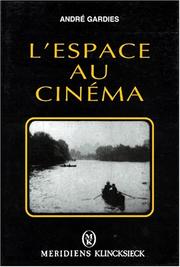| Listing 1 - 4 of 4 |
Sort by
|
Book
Year: 2004 Publisher: Aachen : Geographisches Institut der RWTH Aachen,
Abstract | Keywords | Export | Availability | Bookmark
 Loading...
Loading...Choose an application
- Reference Manager
- EndNote
- RefWorks (Direct export to RefWorks)
Economische politiek. --- Ruimtelijke aspecten. --- Toetredingen. --- Europese Unie. --- Industries --- Industrie --- 4.230. --- Luxembourg --- Luxembourg --- Economic conditions. --- Conditions économiques
Book
ISBN: 9783896695666 3896695665 Year: 2006 Publisher: Konstanz UVK
Abstract | Keywords | Export | Availability | Bookmark
 Loading...
Loading...Choose an application
- Reference Manager
- EndNote
- RefWorks (Direct export to RefWorks)
World history --- anno 1600-1699 --- anno 1700-1799 --- Cities and towns --- Cities and towns. --- City and town life --- City and town life. --- Municipal government --- Municipal government. --- Politieke macht. --- Ruimtelijke aspecten. --- Sozialstruktur. --- Stadt. --- Steden. --- Öffentlicher Raum. --- History --- Geschichte 1600-1800. --- Dresden <2004>. --- Europe.

ISBN: 286563311X 9782865633111 Year: 1993 Publisher: Paris Méridiens Klincksieck
Abstract | Keywords | Export | Availability | Bookmark
 Loading...
Loading...Choose an application
- Reference Manager
- EndNote
- RefWorks (Direct export to RefWorks)
Loin d'être un simple décor, l'espace apparaît au cinéma comme constitutif de la réception filmique, partenaire majeur de la narration et lieu central de l'implication du spectateur. Cette étude s'attache ainsi à une réévaluation théorique et ontologique de l'espace au cinéma.
Cinéma --- Motion pictures --- Space (Art) --- Space and time in art --- Aesthetics --- Setting and scenery --- Esthétique --- CDL --- 791.41 --- Cinema --- Feature films --- Films --- Movies --- Moving-pictures --- Audio-visual materials --- Mass media --- Performing arts --- History and criticism --- Space in motion pictures --- Motion picture authorship --- Motion picture locations --- Blocking (Motion pictures) --- Espace et temps au cinéma --- Cinéma --- Extérieurs (Cinéma) --- Cadrage --- Esthétique --- Art d'écrire --- Motion pictures - Aesthetics --- Motion pictures - Setting and scenery --- Cinéma - Esthétique --- Space and time in motion pictures. --- Space and time in art. --- Sémiotique et cinéma. --- Filmkunst. --- Filmtheorie. --- Ruimtelijke aspecten. --- Cadrage. --- Setting and scenery. --- Esthétique. --- Art d'écrire. --- Extérieurs.

ISBN: 1282271369 9786612271366 1400825075 9781400825073 9780691058092 0691058091 Year: 2009 Publisher: Princeton, NJ
Abstract | Keywords | Export | Availability | Bookmark
 Loading...
Loading...Choose an application
- Reference Manager
- EndNote
- RefWorks (Direct export to RefWorks)
Is "space" a thing, a container, an abstraction, a metaphor, or a social construct? This much is certain: space is part and parcel of the theater, of what it is and how it works. In The Play of Space, noted classicist-director Rush Rehm offers a strikingly original approach to the spatial parameters of Greek tragedy as performed in the open-air theater of Dionysus. Emphasizing the interplay between natural place and fictional setting, between the world visible to the audience and that evoked by individual tragedies, Rehm argues for an ecology of the ancient theater, one that "nests" fifth-century theatrical space within other significant social, political, and religious spaces of Athens. Drawing on the work of James J. Gibson, Kurt Lewin, and Michel Foucault, Rehm crosses a range of disciplines--classics, theater studies, cognitive psychology, archaeology and architectural history, cultural studies, and performance theory--to analyze the phenomenology of space and its transformations in the plays of Aeschylus, Sophocles, and Euripides. His discussion of Athenian theatrical and spatial practice challenges the contemporary view that space represents a "text" to be read, or constitutes a site of structural dualities (e.g., outside-inside, public-private, nature-culture). Chapters on specific tragedies explore the spatial dynamics of homecoming ("space for returns"); the opposed constraints of exile ("eremetic space" devoid of normal community); the power of bodies in extremis to transform their theatrical environment ("space and the body"); the portrayal of characters on the margin ("space and the other"); and the tragic interactions of space and temporality ("space, time, and memory"). An appendix surveys pre-Socratic thought on space and motion, related ideas of Plato and Aristotle, and, as pertinent, later views on space developed by Newton, Leibniz, Descartes, Kant, and Einstein. Eloquently written and with Greek texts deftly translated, this book yields rich new insights into our oldest surviving drama.
Theater --- Space and time in literature. --- Greek drama (Tragedy) --- Greek drama --- Space and time as a theme in literature --- History --- History and criticism. --- Ancient presentation --- Presentation, Ancient --- Space and time in literature --- History and criticism --- Space perception. --- Spatial perception --- Perception --- Spatial behavior --- Figure-ground perception --- Geographical perception --- 18.43 ancient Greek literature. --- Greek drama (Tragedy). --- Grieks. --- Ruimtelijke aspecten. --- Theater. --- Théâtre --- Tragedies. --- Tragédie grecque. --- Voorstellingen (uitvoerende kunsten). --- To 500. --- Greece. --- Theater - Greece --- Theater - History - To 500 --- Greek drama (Tragedy) - History and criticism --- Aegina. --- Alcibiades. --- Amazons. --- Beckett, Samuel. --- Chomsky, Noam. --- Diogenes of Apollonia. --- Eleatics. --- Empedocles. --- Foucault, Michel. --- Gellie, George. --- Goldhill, Simon. --- Halliburton, David. --- Heidegger, Martin. --- Heraclitus. --- Jameson, Michael. --- Lewin, Kurt. --- Loraux, Nicole. --- Newton, Isaac. --- Nightingale, Andrea. --- Palladion. --- Panhellenic norms. --- Parminides. --- Pnyx. --- Seaford, Richard. --- Themistocles. --- actors. --- architecture. --- dance. --- elements. --- ephebeia. --- exile. --- hero cult. --- landscape. --- memory. --- orality. --- role doubling. --- semiotics.
| Listing 1 - 4 of 4 |
Sort by
|

 Search
Search Feedback
Feedback About UniCat
About UniCat  Help
Help News
News